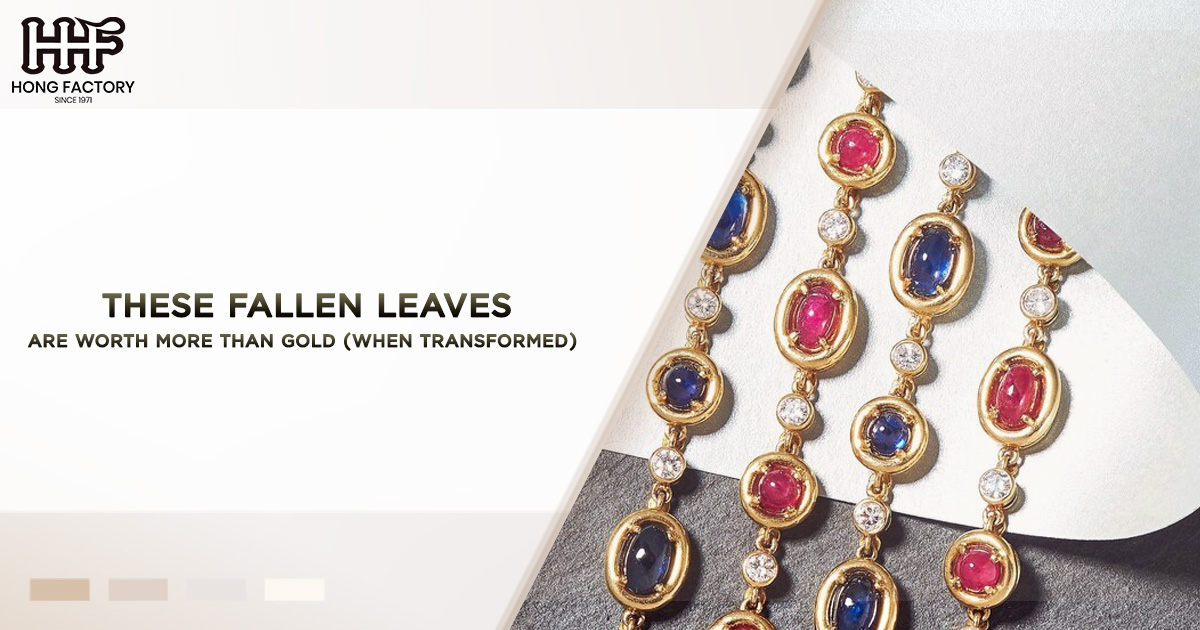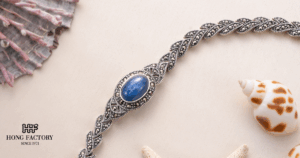In a world increasingly appreciative of nature’s beauty, the art of transforming preserved natural elements into luxury items has gained significant traction. Among these elements, fallen leaves stand out as remarkable materials that, when meticulously preserved and crafted, can become exquisite pieces of leaf jewelry and botanical art.
This trend not only highlights the elegance of nature but also celebrates the craft of natural preservation, allowing us to cherish and wear the beauty of the outdoors. In this article, we will explore how fallen leaves are transformed into luxurious crafts, the techniques involved, and the artistic vision that elevates these organic materials to a status higher than gold.
The Allure of Nature : From Leaves to Luxury
The increasing demand for unique and sustainable luxury items has shifted consumer interest towards natural materials. This change reflects a broader cultural appreciation for nature’s artistry and a desire for items with personal meaning and connection. Fallen leaves, often overlooked in their raw form, possess intricate designs, vibrant colors, and textures that tell a story about the seasons and the life of the plant.
When transformed through the craft of natural preservation, these leaves can embody elegance and sophistication, making them desirable as accessories and decor. Whether through jewelry, home decor, or art pieces, the ability to capture the ephemeral beauty of leaves creates a connection that resonates with those who appreciate luxury grounded in nature.
The Process of Natural Preservation
The transformation of fallen leaves into luxury items begins with careful harvesting and preservation. The processes involved in natural preservation can vary, but they typically include the following steps
- Selection and Harvesting
Choosing the right leaves is crucial. Artisans often seek out leaves with unique shapes, rich colors, and interesting textures. Seasonal changes can greatly influence the appearance of leaves, with autumn being a particularly vibrant time when leaves showcase a stunning array of reds, yellows, and oranges. The selection process requires a keen eye, as the best leaves are those that have maintained their integrity and hold potential for transformation.
- Drying Techniques
Once harvested, leaves must be properly dried to prevent decay and preserve their color and structure. Common drying techniques include pressing and air drying. Pressing leaves between paper or in a book removes moisture and flattens them, creating an appealing two-dimensional form. Alternative methods, like using silica gel, allow for quicker drying while retaining the leaf’s natural shape and color.
- Preservation Methods
After drying, the next step is preservation. Artisans often apply a variety of natural preservation methods, such as resin pouring or coating. Resin not only protects the leaves but also enhances their color and detail, creating a resin-encased leaf that can be fashioned into jewelry or art pieces. This technique allows the natural beauty of the leaves to shine while ensuring their longevity.
- Crafting and Finishing
The final step involves the actual crafting of the luxury items. Artisans may create intricate pieces of leaf jewelry, such as earrings, necklaces, and bracelets, incorporating metals and other materials to complement the leaves. Alternatively, preserved leaves can be set in frames or used in larger pieces of botanical art, creating stunning displays that highlight the beauty of nature.
Leaf Jewelry : A Testament to Nature’s Craftsmanship
Leaf jewelry represents a compelling intersection of nature and luxury craftsmanship. Each piece is unique, showcasing the individual qualities of the leaves used in its creation. Here are some popular styles of leaf jewelry that reflect the beauty of natural preservation :
- Resin-Encased Leaf Pendants
One of the most popular forms of leaf jewelry is the resin-encased pendant. Artisans carefully place dried leaves in a mold and pour clear or colored resin over them, creating a durable and striking pendant. These pendants can be worn on simple chains or cords, allowing the beauty of the leaf to take center stage. The translucent resin enhances the colors and details of the leaves, making each piece visually striking.
- Leaf Earrings
Leaf earrings can range from subtle and delicate to bold statement pieces. Artisans often craft earrings using a combination of preserved leaves, metal components, and other materials. The result is a pair of earrings that capture the essence of nature, perfect for those who wish to express their love for the outdoors through their style.
- Botanical Bracelets
Bracelets made with preserved leaves can feature multiple leaves or a single, large centerpiece. These bracelets often incorporate beads or metal settings, enhancing their aesthetic appeal. The combination of natural and crafted elements creates a harmonious design that resonates with the wearer’s appreciation for nature.
Botanical Art : Preserved Leaves as Home Decor
Beyond jewelry, preserved leaves find their place in botanical art, allowing their beauty to be showcased as home decor. Here are some ways artisans incorporate preserved leaves into stunning works of art
- Framed Leaf Displays
Framed displays of preserved leaves can serve as elegant wall art. Artisans arrange leaves in captivating designs, often accompanied by other natural elements like flowers or twigs. These displays not only beautify a space but also evoke feelings of tranquility and connection to nature.
- Leaf Shadow Boxes
Shadow boxes are another popular form of botanical art that can feature preserved leaves alongside photographs or other keepsakes. These three-dimensional displays create a personal connection, turning natural elements into cherished memories.
- Table Centerpieces
Preserved leaves can be used to create unique table centerpieces, often combined with candles, flowers, or other organic materials. These arrangements bring the beauty of nature indoors, creating an inviting atmosphere for gatherings.
The Environmental Impact and Ethical Considerations
As consumers become more conscientious about their purchasing choices, the environmental impact of luxury items is increasingly scrutinized. The transformation of fallen leaves into luxury crafts offers several advantages in this regard :
- Sustainable Sourcing
The use of fallen leaves as a primary material often involves minimal environmental impact. Leaves that would typically be discarded after seasonal changes can be repurposed, reducing waste and creating a demand for sustainable practices in jewelry and art production.
- Natural Preservation Techniques
Many artisans prioritize natural preservation methods that do not involve harmful chemicals or processes, aligning their work with eco-friendly principles. This commitment to sustainability not only enhances the value of the items but also appeals to a growing audience that prioritizes ethical consumption.
- Supporting Local Artisans
Purchasing leaf jewelry or botanical art often supports local artisans who are dedicated to preserving traditional crafts. This support not only strengthens local economies but also encourages the continuation of sustainable artistic practices.
Conclusion : The Value of Nature Transformed
The ability to transform fallen leaves into exquisite luxury items illustrates the beauty and creativity that can emerge from nature. As designers and artisans hone their skills in natural preservation, the world of leaf jewelry and botanical art continues to flourish, offering a captivating alternative to traditional luxury goods.
In a landscape where the meaning of luxury is evolving, preserved leaves are proving to be worth more than gold. Their unique beauty, sustainability, and the stories they tell make them sought-after treasures in an increasingly eco-conscious market. As consumers embrace these distinctive pieces, they not only adorn themselves with nature’s elegance but also participate in a movement that celebrates craftsmanship, sustainability, and the timeless allure of the natural world. In every piece of leaf jewelry or botanical art, there lies a testament to the intricate connection between humans and nature, reminding us to honor and cherish the beauty that surrounds us.




